
Next stop in our series of pickle recipes is sauerkraut – a classic and traditional lacto-fermented pickle of thinly sliced/shredded cabbage.
Like many lacto-fermented recipes, the process of making sauerkraut is ultra simple and practically involves shoving salted sliced cabbage in a jar, packing it tight, covering it with a lid, storing it in a safe place and waiting for it to ferment.
One can get a little fancy and add a few extra ingredients/aromatics, such as juniper berries, caraway seeds and mustard seeds (which is what I’ve done in this recipe bigsmile ), but it will still work and taste great with just its core ingredients of cabbage and salt.
The word ‘sauerkraut’ is German which translates to ‘sour cabbage’.((2)) According to online sources and contrary to popular belief, it was not invented by the Germans. Instead, it is believed to have originated in the east and then brought over to Europe by Ghenghis Khan about 1,000 years ago.((3))
The modern method of curing cabbage with salt (which extracts water from the veg), allowing the mixture to ferment (which turns the sugars in the cabbage into lactic acid which works as a preservative) was practiced in the 16th century by the Germanic peoples.((4))
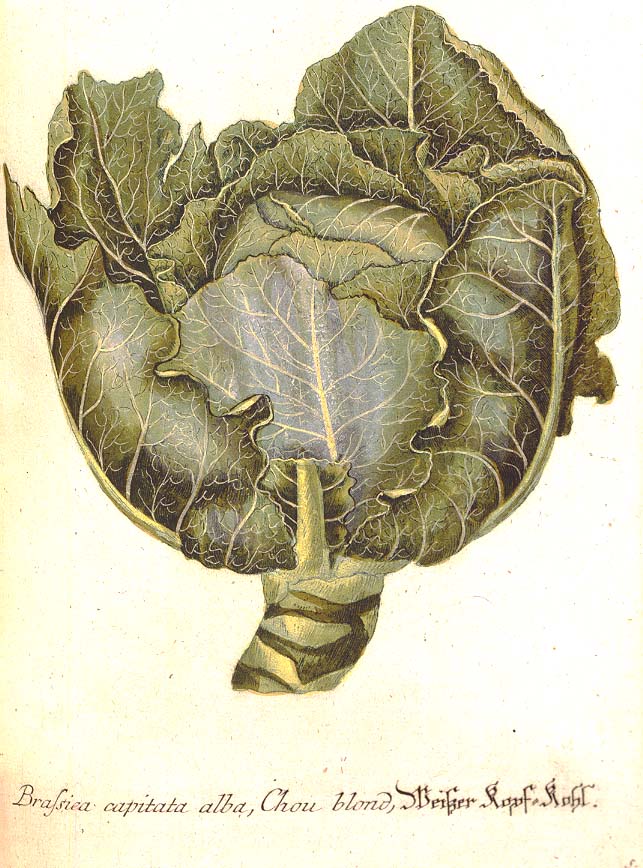
Pickled cabbage is enjoyed worldwide with a rainbow of variations/recipes from sauerkraut to kimchi. The Lao entry into the pickled cabbage hall of fame is ‘som puck garlum be’ which translates to ‘soured cabbage’.
The distinction of som puck garlum be is that it usually includes cooked rice grains and pork skin which gives the dish a wonderful meaty and gelatinous/jelly contrast to the squeaky cabbage pieces. I was unable to find pork skin so I’ll publish a post/recipe for som puck garlum be in the near future.
Many health benefits have been claimed for sauerkraut. If unpasteurized and uncooked, sauerkraut contains live lactobacilli and beneficial microbes, and is rich in enzymes. The fiber and probiotics in the sauerkraut help improve digestion and promote the growth of healthy bowel flora, which protects against many diseases of the digestive tract.((5))
Sauerkraut also provides a significant amount of vitamins C and K, and boosts your energy and immune system with iron.((6))
There are some disadvantages. Because sauerkraut is fermented with salt, it is high in sodium.((7)) This depends on which brand/variety you buy if it’s store bought and what recipe you use if it’s homemade. Excessive consumption of sauerkraut may also lead to bloating and flatulence (no surprises there).((8))

Sauerkraut is a popular dish with Eastern Europeans. Jews adopted sauerkraut as part of their cuisine and are thought to have introduced it in the northern countries of Western Europe and the United States. Sauerkraut is a staple of the winter diet in Germany and the Netherlands. It is customarily prepared with pork, although Jews customarily use goose or duck meat instead.((10))
The first time I ate sauerkraut was at Una’s in Darlinghurst, NSW (a German restaurant) and I thoroughly enjoyed its complementary distinctive, pungent/pickled cabbage flavours. smile
There are several different sauerkraut recipes. I based the following recipe on a few different ones I found online, including Sandor Katz’s Sauerkraut Basic Recipe at Wild Fermentation, Sauerkrautrecipe.org and The Kitchn’s How To Make Homemade Sauerkraut in a Mason Jar.
I love the taste of cabbage (raw and cooked) and pickled foods, and am a proud fan of pickled cabbage in all its glory. I honestly can’t wait to try these home brewed sauerkraut and eat them raw/cooked and served with juicy meats. Yummm!! bigsmile
Note: Traditionally, a stoneware crock is used to make sauerkraut.((11)) Some recipes that I found suggests using a ceramic crock and/or a secured cloth to cover the mouth of the crock/jar. I have used a glass jar in my example and instead of covering the jar with a cloth, I simply closed the mouth of the jar tightly with its own glass flip lid, as demonstrated by Sauerkrautrecipe.org. With this method, I just need to remember to regularly let the jar burp and be extra careful when doing so in case there’s a dangerous eruption/explosion.

PS: Happy Father’s Day again dad! Hope you had a great day today. Love you and wishing you many more happy years to come. Hope all the fathers and good men out there had a cheery day today too. Peace and best wishes!((12)) mrgreen mrgreen



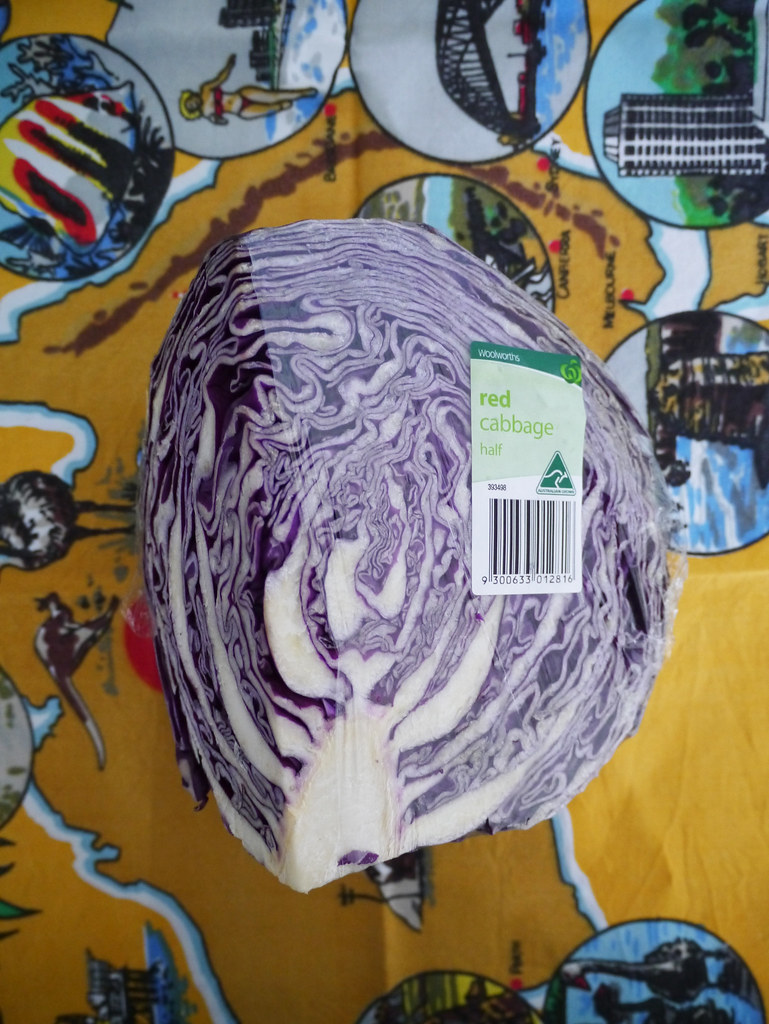

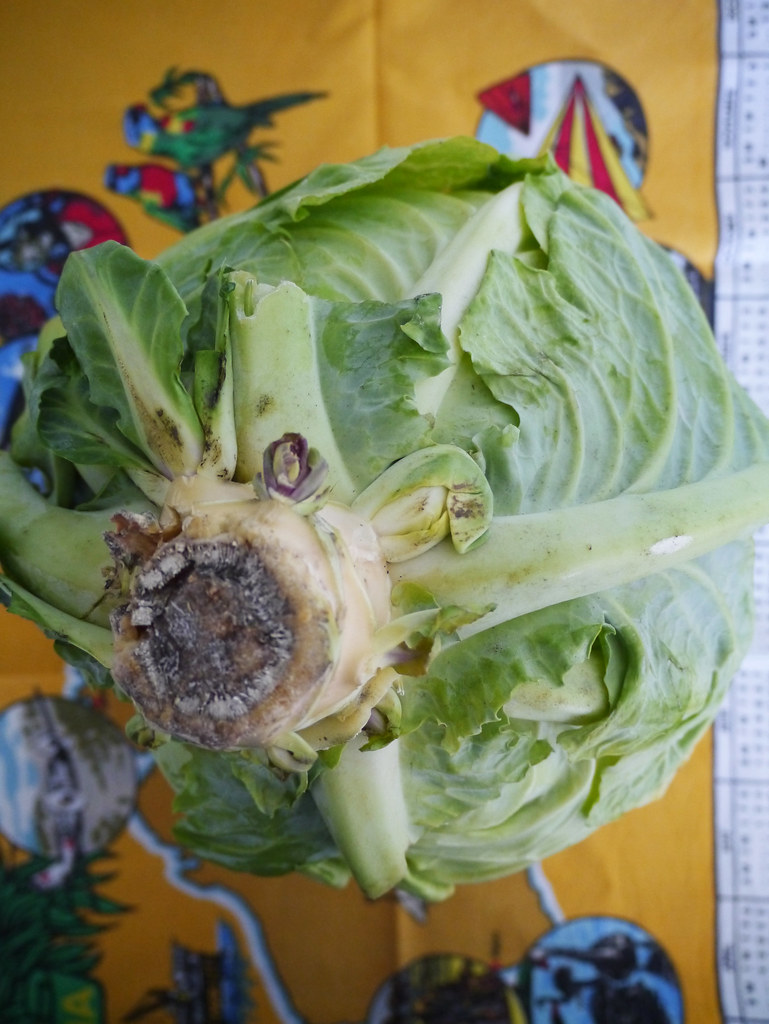
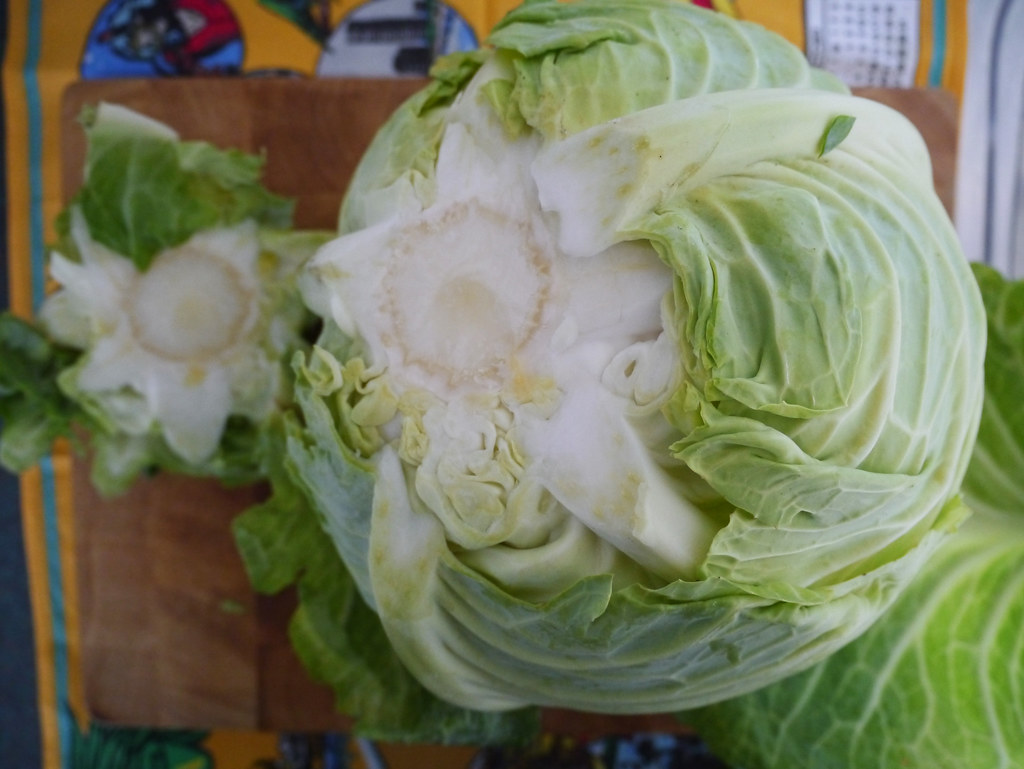
Carefully cut off the root section of the cabbage head with a cleaver. Reserve it to use as a plug to help push the cabbage mixture down in the jar.
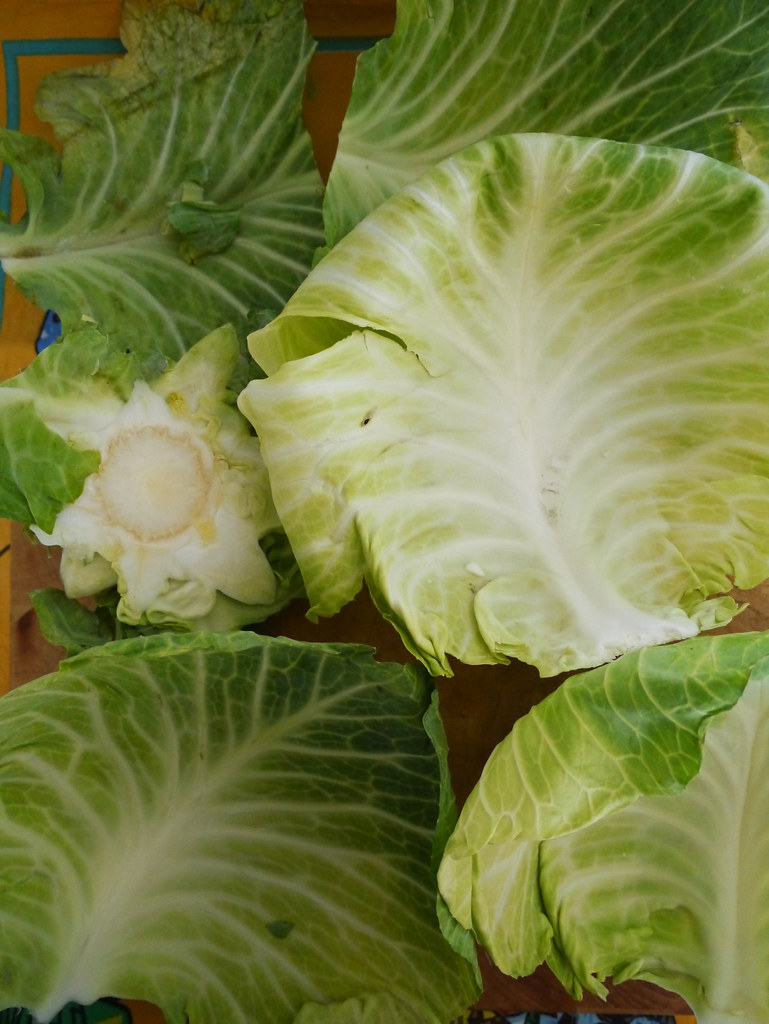
Remove and discard any wilted and unhealthy outer leaves. Reserve one clean and healthy large outer leaf to place on top of cabbage in the jar.

Cut the cabbage head into quarters.
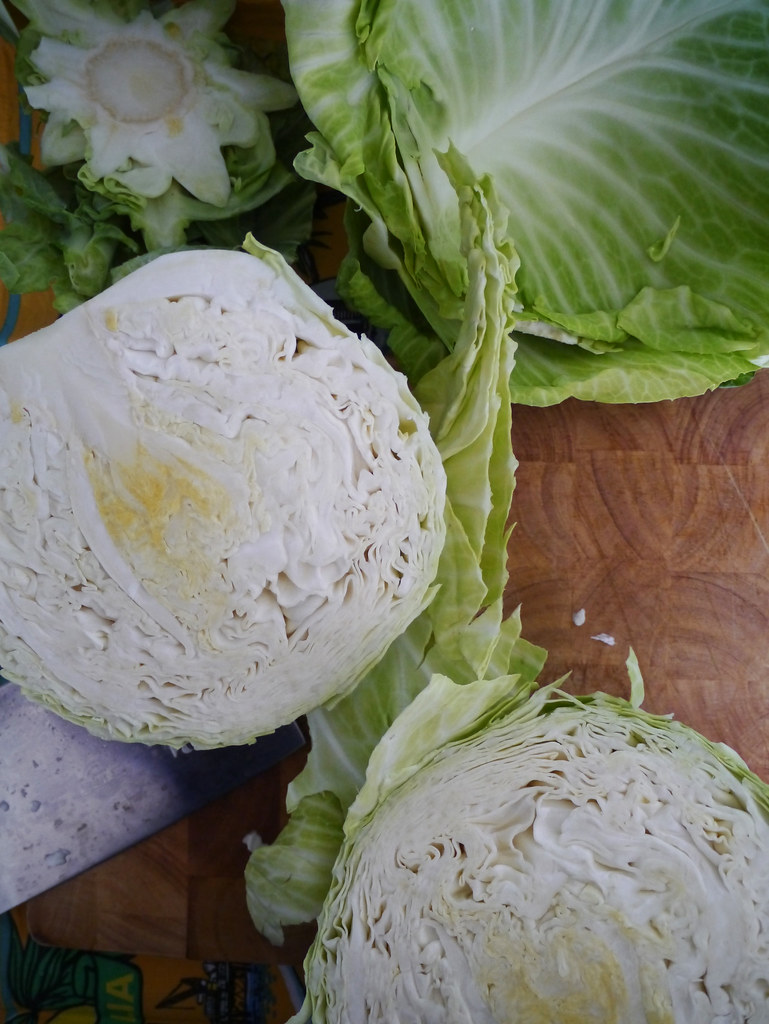
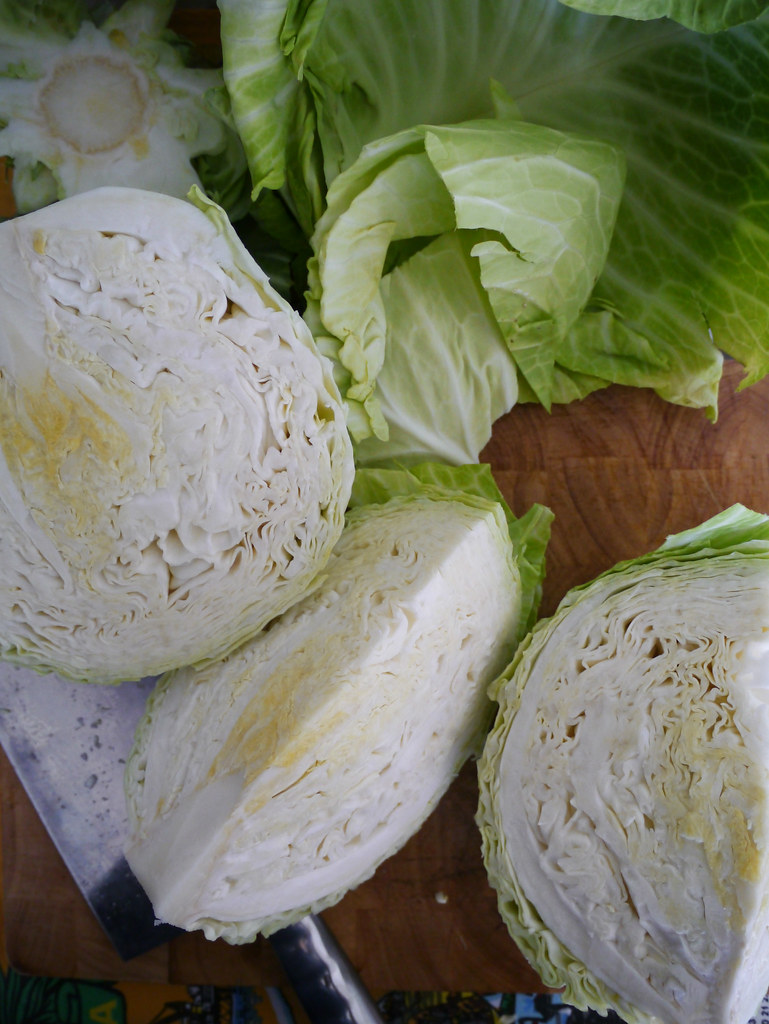
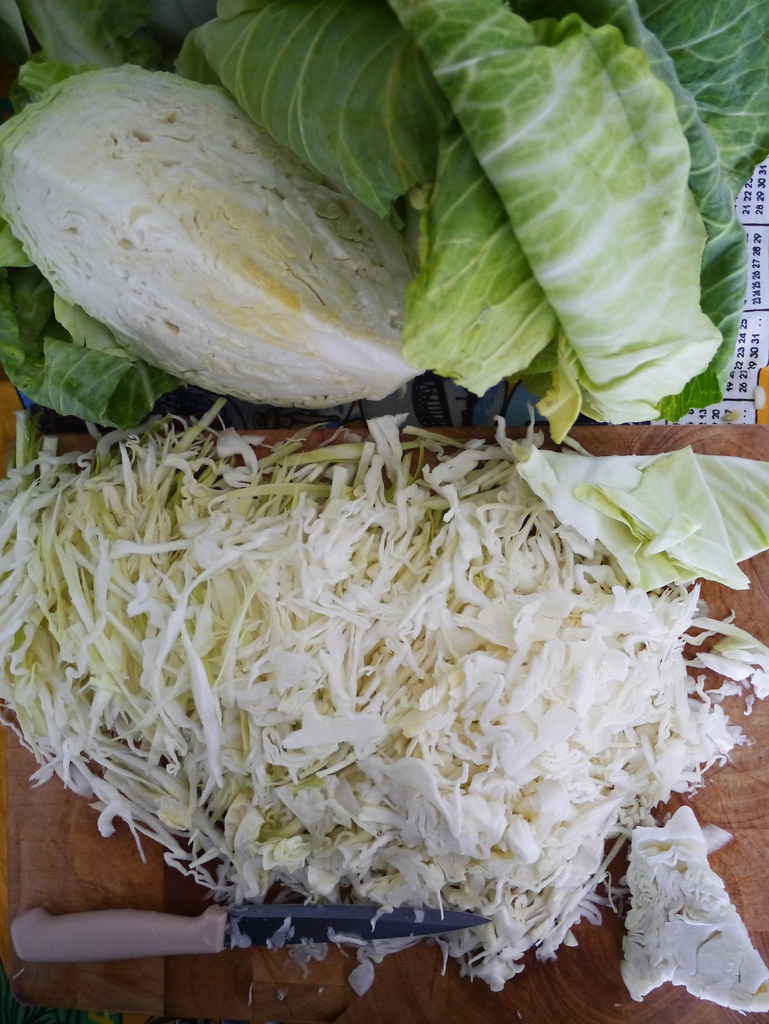
Wash the cut quarters and thinly slice the cabbage into ribbons with a knife or mandolin. I decided to use ¾ of a whole white cabbage head and ¼ of a red cabbage in this recipe example.
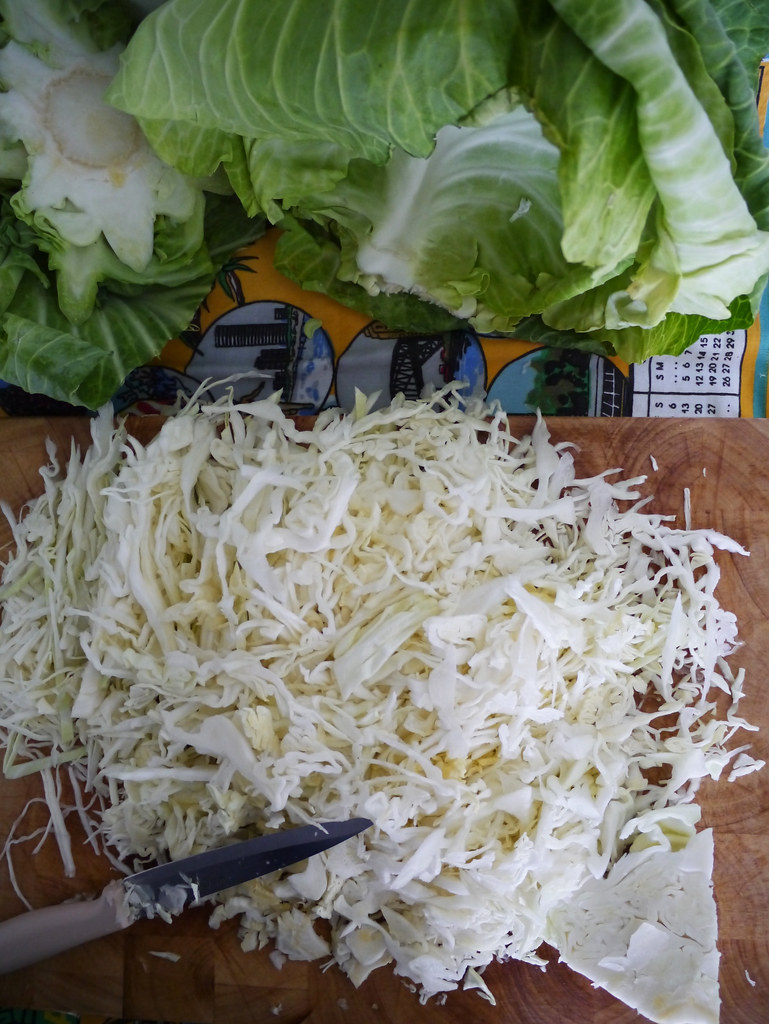
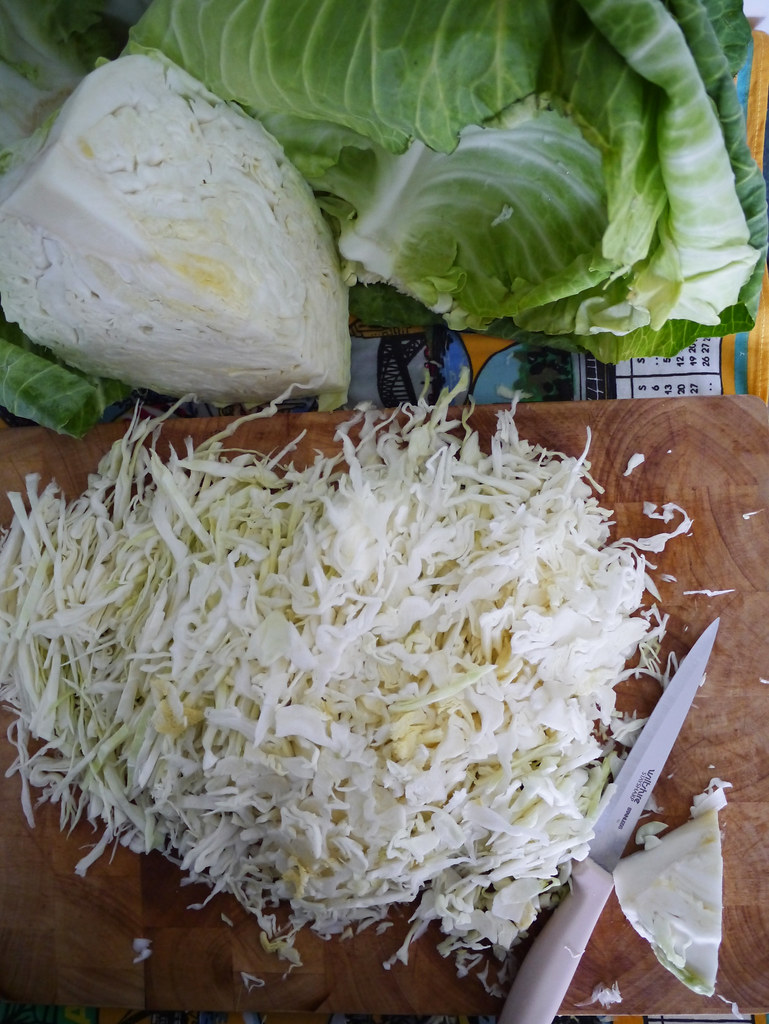


In a large mixing bowl, place the sliced cabbage and add the salt. With your hands, massage and mix the cabbage and salt together very well. Knead and squeeze the cabbage to release its juices and make it soft. The cabbage should be soft and slippery and there should be cabbage juices in the bowl.
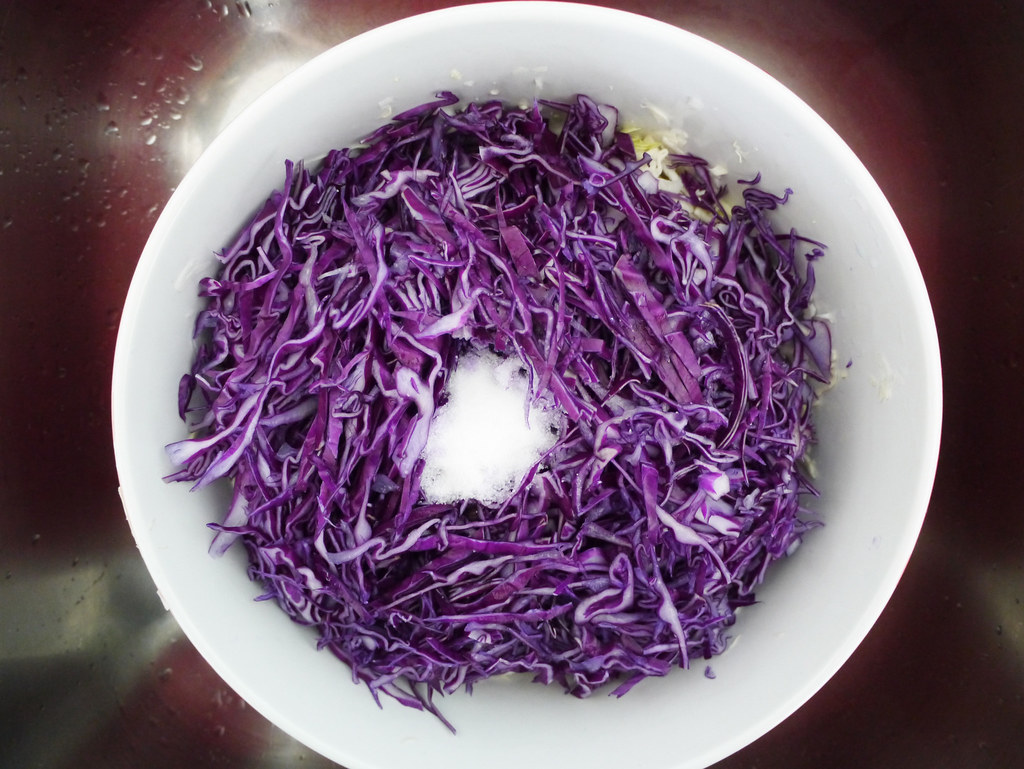

Add the juniper berries, caraway seeds and mustard seeds and mix them in with the cabbage.
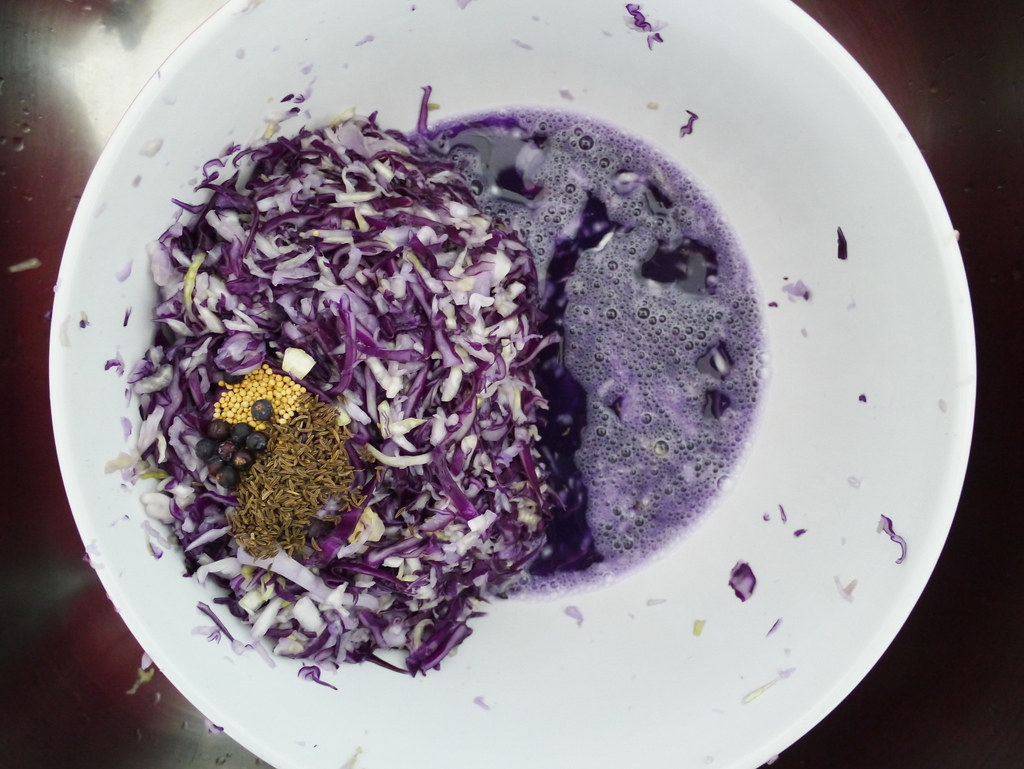
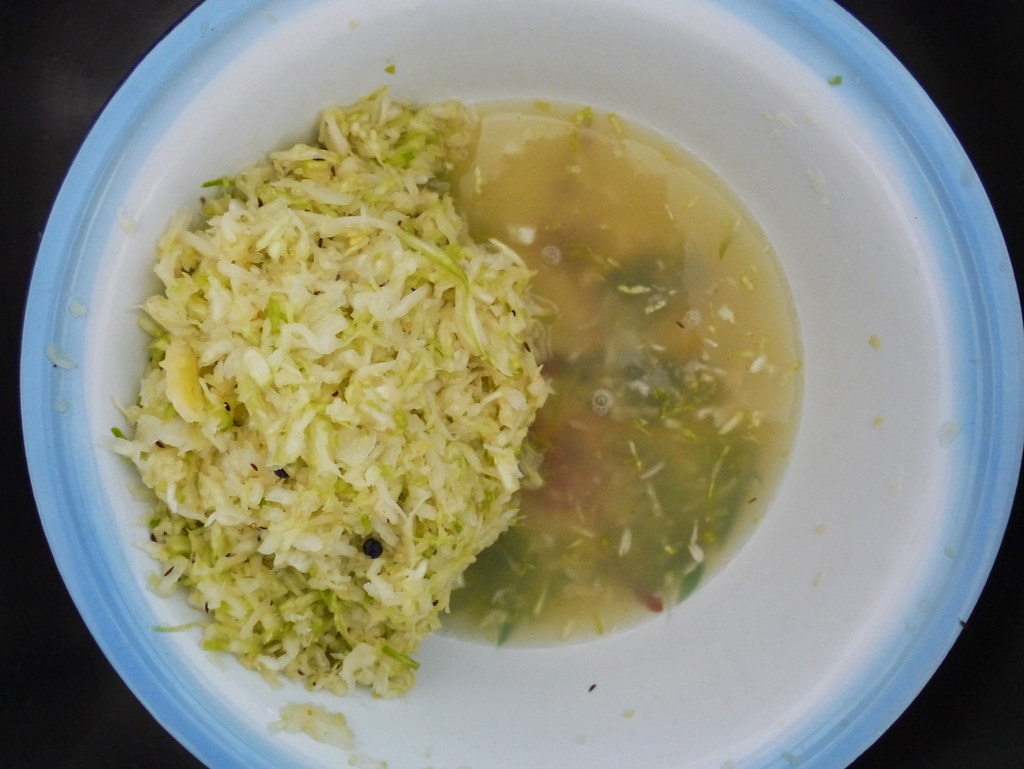
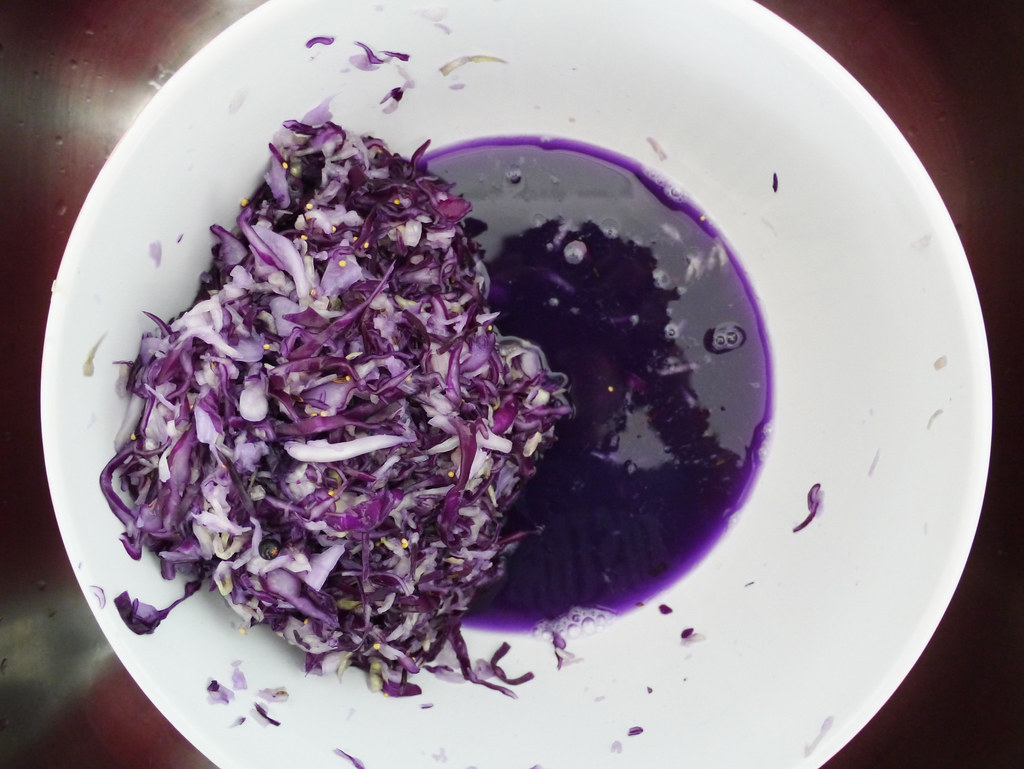
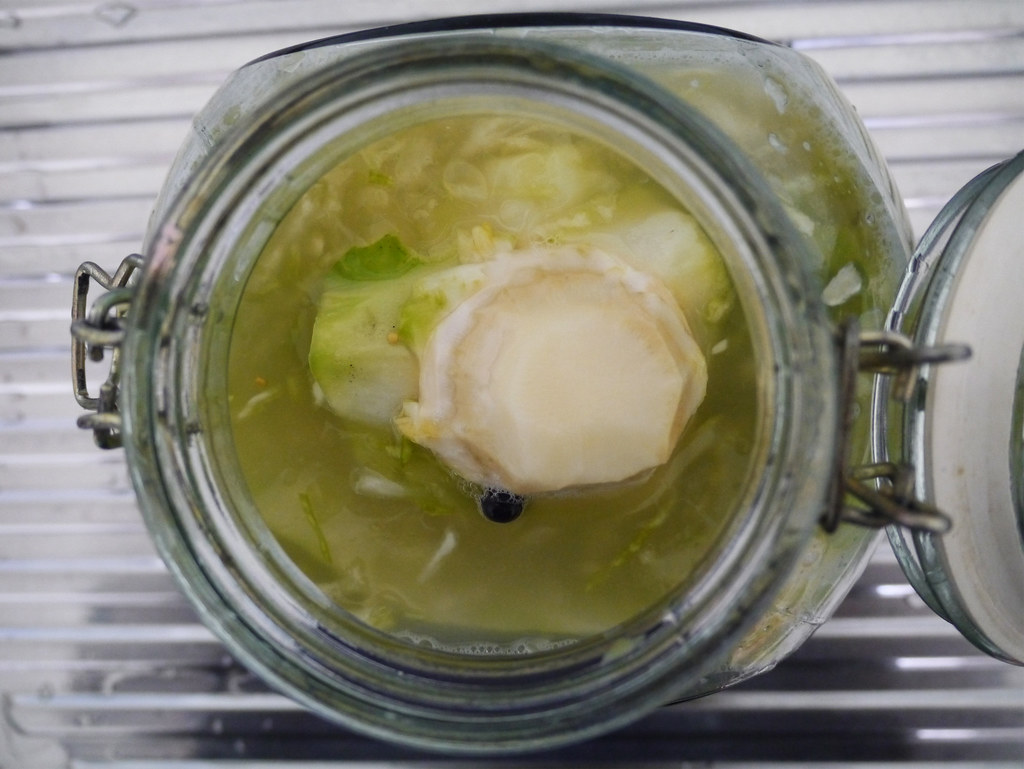
In a clean sterilized glass jar, carefully transfer the cabbage mixture with your hands or a wooden spoon. Pour the cabbage juices into the jar as well. Push the cabbage down firmly with your hand or a wooden spoon. Leave about 5 cm space between the surface of the liquid and the lid of the jar to prevent eruption when opening the jar. Wash and trim the large cabbage leaf and place it inside the jar on top of the cabbage. Use it to keep the cabbage submerged. Wash and trim the root section of the cabbage and place it inside the jar on top of the cabbage leaf. Use it as a plug to help push the cabbage down and keep it submerged. Make sure that the cabbage is fully submerged under its juices/brine. Place the lid back on the jar and seal tightly.
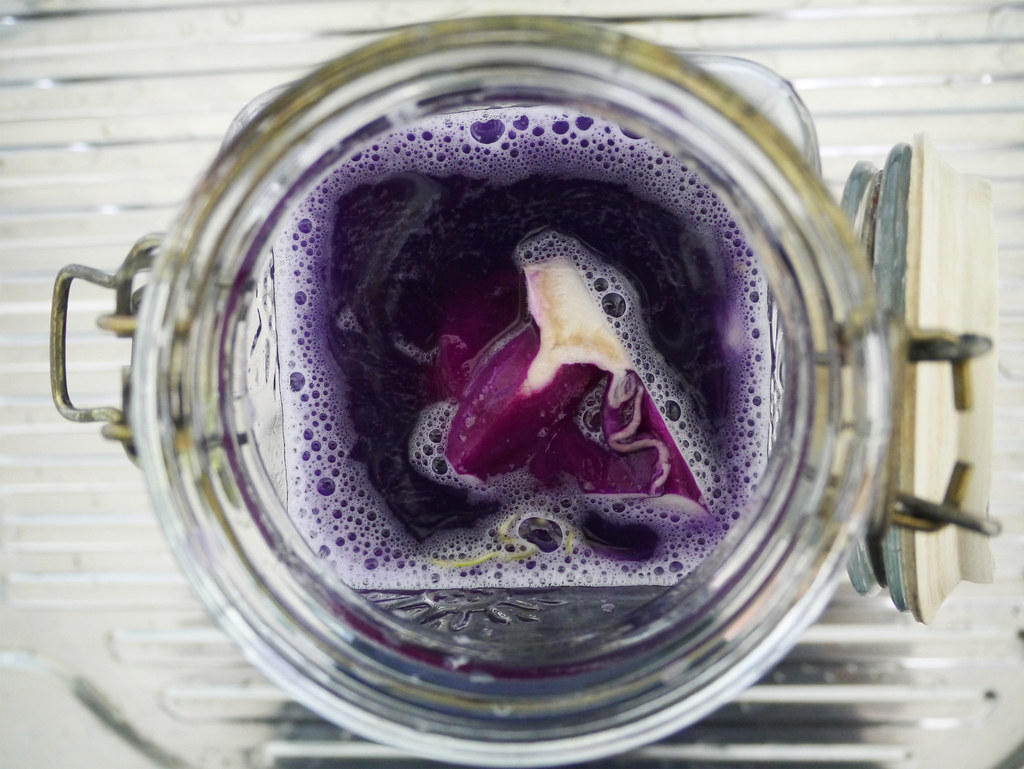

Store the jar in a cool and safe place (room temperature and away from direct light). Let it ferment for 4-10 days. Check the sauerkraut everyday and let it burp by carefully opening the lid. Remember to be very careful when doing this because of the pressure build up. At the same time, push the cabbage down to make sure it is submerged either with the cabbage root plug/segment or a wooden spoon. Taste your sauerkraut after 4 days of fermentation. If you’re happy with how it tastes, store it in the fridge. Otherwise, let it ferment for a little longer.

- 1 large cabbage head
- 20 juniper berries
- 2 tsp of caraway seeds
- 2 tsp of yellow mustard seeds
- 3 TBS of sea salt
- Carefully cut off the root section of the cabbage head with a cleaver. Reserve it to use as a plug to help push the cabbage mixture down in the jar.
- Remove and discard any wilted and unhealthy outer leaves. Reserve one clean and healthy large outer leaf to place on top of cabbage in the jar.
- Cut the cabbage head into quarters.
- Wash the cut quarters and thinly slice the cabbage into ribbons with a knife or mandolin. I decided to use ¾ of a whole white cabbage head and ¼ of a red cabbage in this recipe example.
- In a large mixing bowl, place the sliced cabbage and add the salt.
- With your hands, massage and mix the cabbage and salt together very well. Knead and squeeze the cabbage to release its juices and make it soft. The cabbage should be soft and slippery and there should be cabbage juices in the bowl.
- Add the juniper berries, caraway seeds and mustard seeds and mix them in with the cabbage.
- In a clean sterilized glass jar, carefully transfer the cabbage mixture with your hands or a wooden spoon. Pour the cabbage juices into the jar as well. Push the cabbage down firmly with your hand or a wooden spoon. Leave about 5 cm space between the surface of the liquid and the lid of the jar to prevent eruption when opening the jar.
- Wash and trim the large cabbage leaf and place it inside the jar on top of the cabbage. Use it to keep the cabbage submerged.
- Wash and trim the root section of the cabbage and place it inside the jar on top of the cabbage leaf. Use it as a plug to help push the cabbage down and keep it submerged. Make sure that the cabbage is fully submerged under its juices/brine.
- Place the lid back on the jar and seal tightly.
- Store the jar in a cool and safe place (room temperature and away from direct light). Let it ferment for 4-10 days.
- Check the sauerkraut everyday and let it burp by carefully opening the lid. Remember to be very careful when doing this because of the pressure build up. At the same time, push the cabbage down to make sure it is submerged either with the cabbage root plug/segment or a wooden spoon.
- Taste your sauerkraut after 4 days of fermentation. If you're happy with how it tastes, store it in the fridge. Otherwise, let it ferment for a little longer.
Sauerkraut Update 12/09/14:

Date Taken: 12/09/14, 4:23 PM (5 days old)
Note: As you can see in today’s update, the sauerkraut has expanded/increased in volume (with obvious air spaces between the sliced cabbage), and risen up the jar since it was made. When I opened the jar, I was expecting an eruption of bubbles/liquid but luckily that was not the case. I simply pushed the sauerkraut back down to submerge it in the brine with the cabbage root/leaf plug and a wooden spoon. I also had a taste of the sauerkraut and its distinctive pickled cabbage taste is obvious – salty and delicious!! I will leave the sauerkraut to let it ferment for a few more days and think it should be ready to eat by then. Yumm!! bigsmile It looks, smells and tastes amazing! The colour of both the white and red sauerkraut has intensified/matured beautifully.
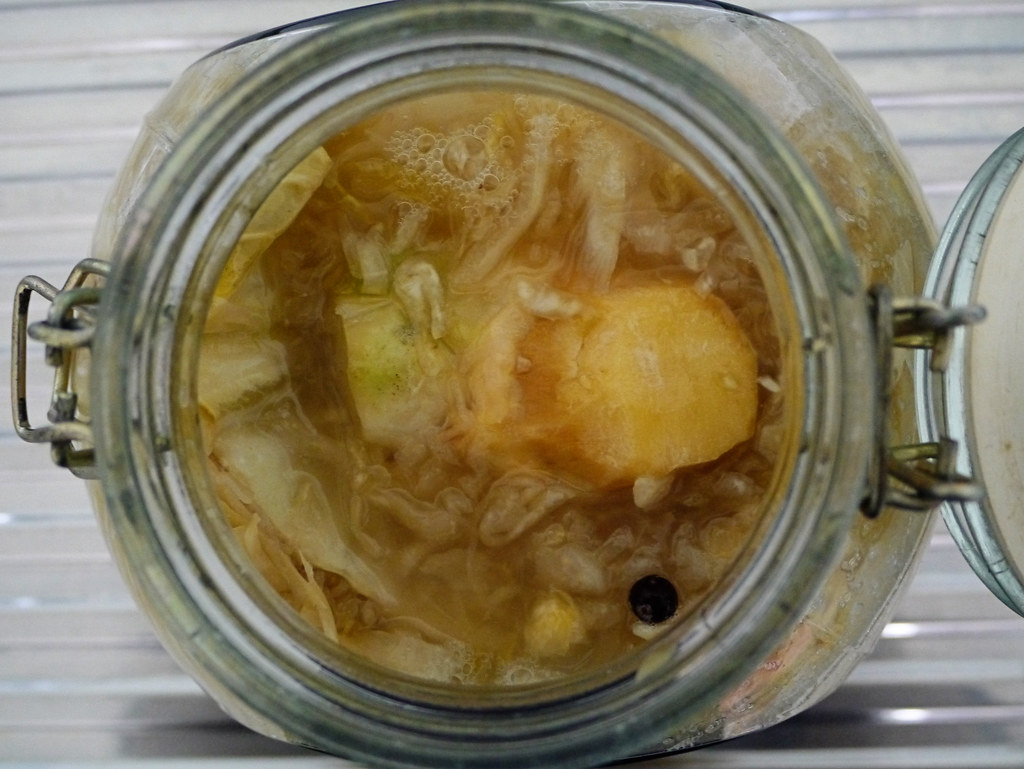
Date Taken: 12/09/14, 4:25 PM (5 days old)
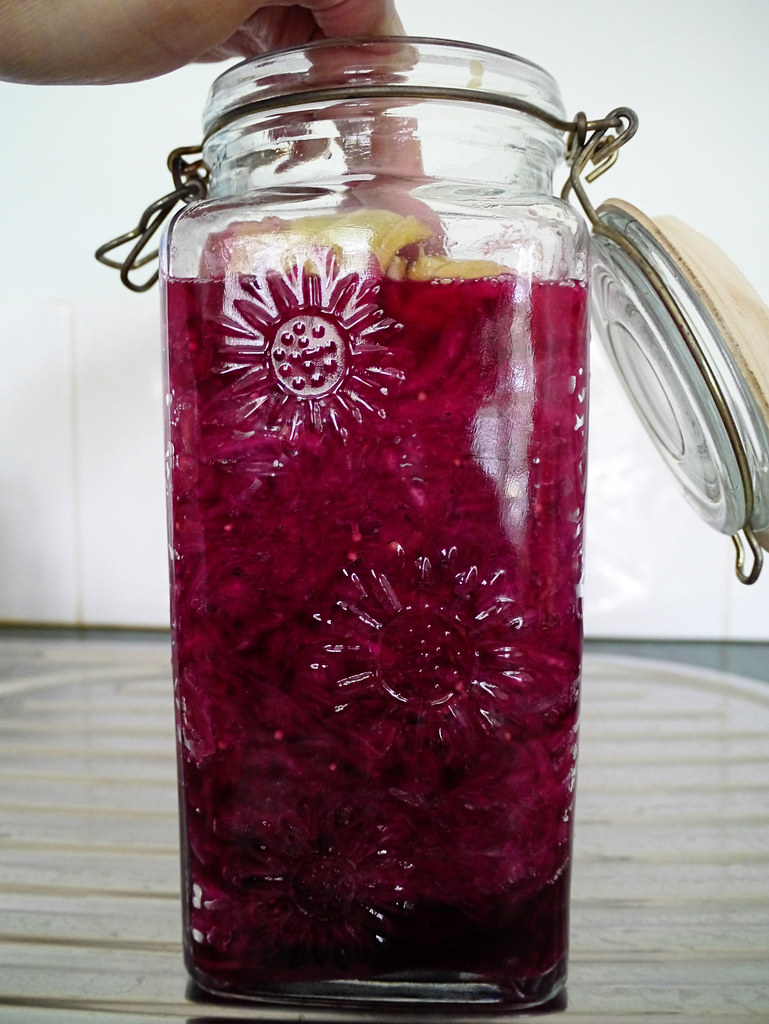
Date Taken: 12/09/14, 4:31 PM (5 days old)
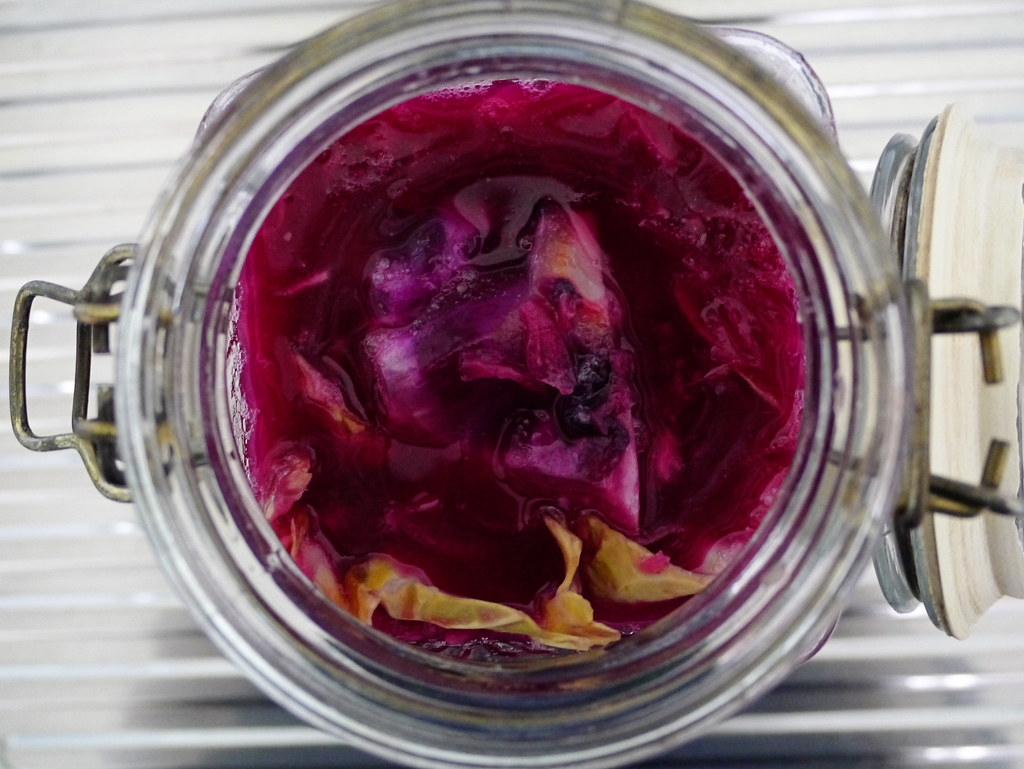
Date Taken: 12/09/14, 4:33 PM (5 days old)

Raw red cabbage sauerkraut (11 days old).
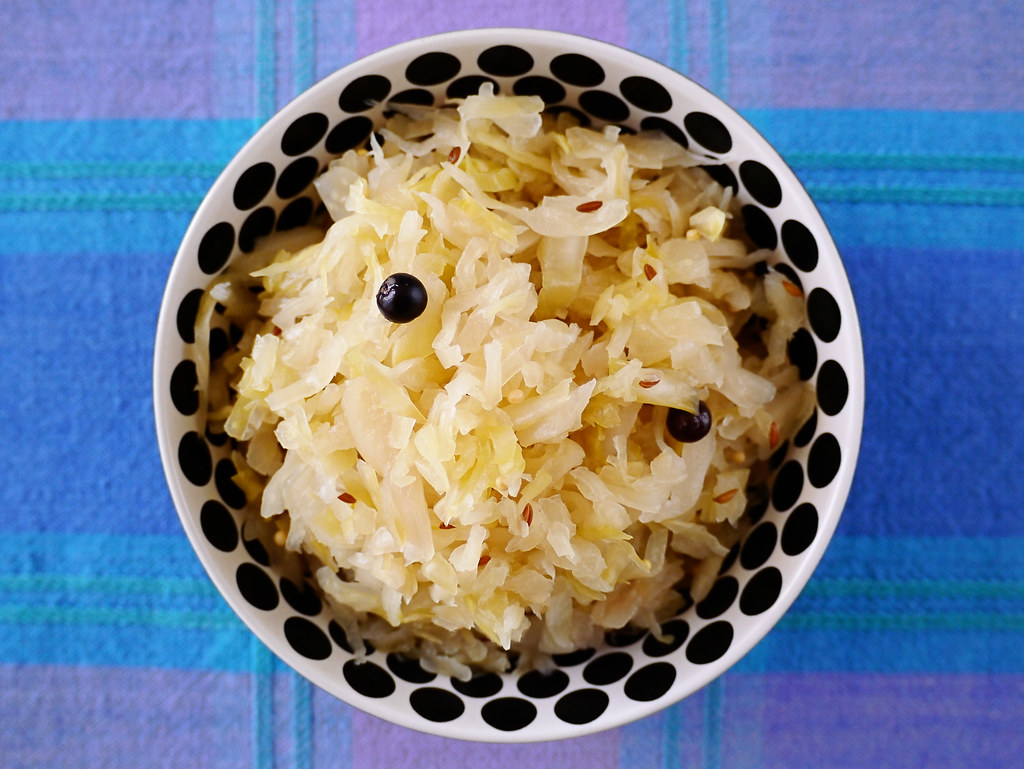
Raw white cabbage sauerkraut (11 days old).
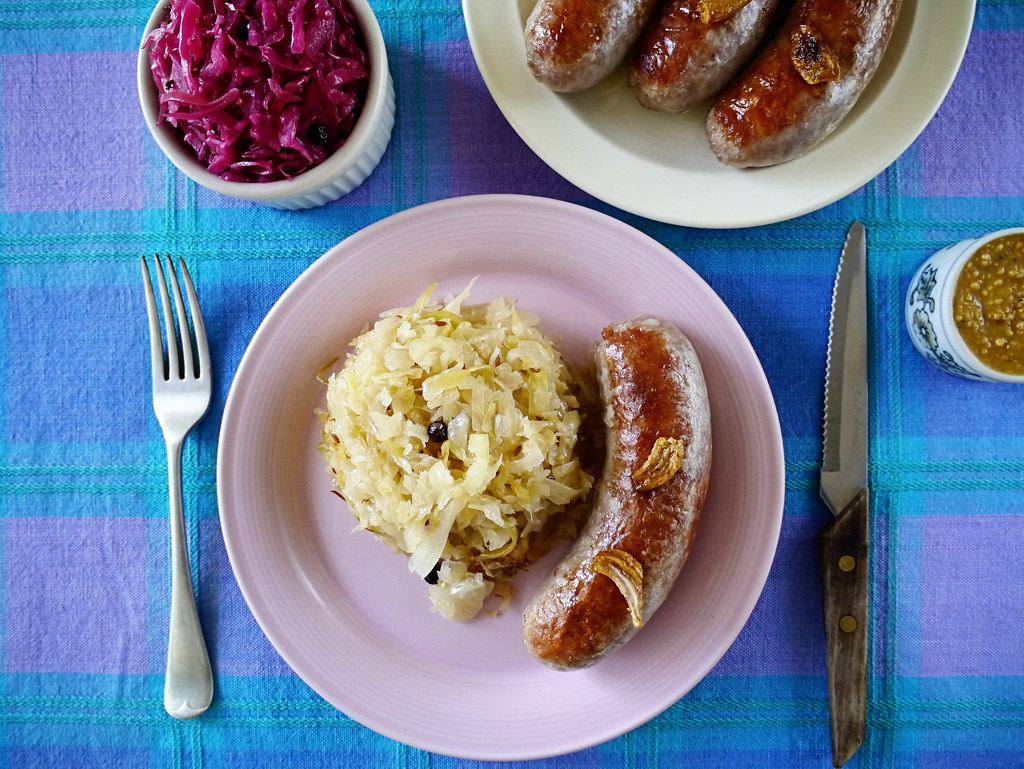
Cooked white and red cabbage sauerkraut served with fat pork sausages and homemade mustard. Mmmm!! bigsmile
Note: The homemade mustard was made by mixing 3 TBSP of lightly ground yellow mustard seeds, 3 TBSP of mustard powder, 1 TBSP of brown sugar, 2 TBSP of pickled malt vinegar, 2 TBSP of verjuice, 2 TBSP Shaoxing rice wine, 1 tsp of sea salt, ground black pepper and 1 minced garlic clove. This makes about ½ a cup of mustard. After mixing the ingredients together in a bowl, transfer the mustard into a glass jar and store in the fridge for 12 hours (overnight) before using it. It tastes amazing!! bigsmile The recipe was adapted from the Basic Country Mustard recipe provided by Hunter Angler Gardener Cook. Thanks very much Hank Shaw!
Sauerkraut Update 30/09/14:

Date Taken: 30/09/14, 4:58 PM (23 days old)
Transferred to a new/smaller jar and kept in the fridge.

Date Taken: 30/09/14, 5:09 PM (23 days old)
Transferred to a new/smaller jar and kept in the fridge.
[[1]]Image Source: Wikimedia Commons. Author: Georg Dionysius Ehret (1708-1770). Date: 1736-1748. Source: Duidelyke Vertoning -Beschryvingen der Bloemdragende Gewassen, vol. I. Permission: Public domain.[[1]]
[[2]]Reference: http://en.wikipedia.org/wiki/Sauerkraut.[[2]]
[[3]]A story tells that labourers building the Great Wall of China over 2,000 years ago were fermenting shredded cabbage in rice wine to preserve it so that they would have a food source during the non-growing season. Ghenghis Khan later brought it to Europe 1,000 years later. Reference: http://easteuropeanfood.about.com/od/vegetables/a/sauerkraut.htm.[[3]]
[[4]]Reference: http://easteuropeanfood.about.com/od/vegetables/a/sauerkraut.htm.[[4]]
[[5]]Reference: http://en.wikipedia.org/wiki/Sauerkraut.[[5]]
[[6]]Reference: http://www.livestrong.com/article/374784-what-are-the-health-benefits-of-sauerkraut/.[[6]]
[[7]]Reference: http://www.livestrong.com/article/374784-what-are-the-health-benefits-of-sauerkraut/.[[7]]
[[8]]Reference: http://en.wikipedia.org/wiki/Sauerkraut.[[8]]
[[9]]Reference: http://easteuropeanfood.about.com/od/vegetables/a/sauerkraut.htm. Photo of Heidi Klum modeling at The Heart Truth Fashion Show 2008. Photo Source: http://en.wikipedia.org/wiki/File:Heidi_Klum4crop.jpg. Author: The Heart Truth. Permission: Creative Commons Attribution-Share Alike 2.0 Generic license.[[9]]
[[10]]Reference: http://www.oklahomapastrycloth.com/blog/?p=2107.[[10]]
[[11]]Reference: http://kitchenproject.com/history/sauerkraut.htm.[[11]]
[[12]]The Hippy Father’s Day Clipart was obtained from here: http://www.happy-fathers-day-2014.com/happy-fathers-day-2014-clip-arts-free.html/a1.[[12]]
Great sharing, Padaek! From looks of it, it will turn out to be an excellent sauerkraut :) Happy Father’s Day to your dad!
Julie
Gourmet Getaways
Hi Julie,
Thanks for your comment. It’s my first attempt at making sauerkraut so I hope I do it justice, although I’ve made Lao som puck garlum bee before and I have a good feeling about the sauerkraut. It’s starting to bubble as I type so anything is possible. How exciting!! Thanks for the father’s day wish. I think dad had a great day. Happy father’s day to yours too. Best wishes! :)
Happy Father’s Day to you and your dad! Yummmmy I love sauerkraut, they are so delicious in everything especially in dumplings! Amazing step by step photos…the purple cabbage has a beautiful color!
Hi Rika,
Thank you for your comment and happy father’s day wishes. I appreciate it. :) I love sauerkraut too, especially its strong pungent taste/smell. I don’t think I’ve had it in dumplings before although it sounds interesting and delicious! I know, I love the intensity of the red/purple cabbage juice. Natural dye colours are really fascinating. Here’s some great work: http://www.folkfibers.com. Best wishes! :)
I always meant to try sauerkraut! And now I have a recipe I know I can count on!! Thanks for sharing this :)
Hi Nagi,
Thank you for your comment. I love sauerkraut and perhaps it’s an acquired taste. It’s cabbage and pungent but delicious, I think. I think you’ll love it too. If you try this recipe, please let me know what you think of it. Thanks Nagi. Best wishes! :)
This is another recipe going on to my to do list!
Hi Tandy,
Thanks very much for your comment. It’s a pretty simple recipe with a bit of hand massaging workout, lol. I like the use of the spices in it. I hope it turns out well. Best wishes. :D
I was waiting for this one! I love sauerkraut and so does my gut health lol. This is an awesome recipe-love the juniper berry addition.
Hi Jem,
Thanks for your comment. Yes, saving the best till last, lol. This recipe is really simple/easy yet rewarding with its flavour, probiotics, etc. I agree, I think the spices will add a wonderful flavour to the sauerkraut. I’ll post the Lao pickled cabbage recipe asap too. Best wishes. :)